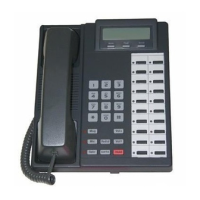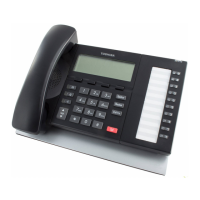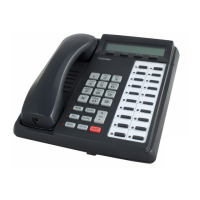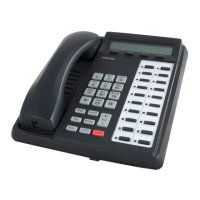Do you have a question about the Toshiba VIPedge IP5131-SDL and is the answer not in the manual?
Covers basic operations for customizing your telephone, including volume and LCD settings.
Details the three ways to originate a call from the telephone: Handset, Speaker, and Hot Dialing.
Explains the use of Account Codes for billing, tracking, and line restrictions.
Allows setting a callback when a busy station becomes idle.
Enables temporarily holding calls in orbits for later retrieval.
Describes methods for transferring calls to other extensions or voice mail.
Instructions for setting up and managing conference calls with multiple parties.
Explains how to activate and deactivate Do Not Disturb mode.
Enables dialing sequences using shorter codes.
Guides through the initial setup process for your voice mailbox.
Enables call forwarding to another phone number before voicemail.
Covers dialing, answering, holding, and transferring calls.
Details typical methods for placing calls using Call Manager.
Describes how to place calls on hold and retrieve them.
Provides instructions for transferring calls using buttons or drag-and-drop.
Guides on setting up and clearing call forwarding.
Covers setting status messages and managing Do Not Disturb.
Controls Call Manager interaction with Windows programs.
Guides on integrating Call Manager with Microsoft Outlook.
Configures dialing plans, outside numbers, and dialer settings.
Configures hot keys for dialing and bringing Call Manager to the front.
Explains how to use and manage programmable buttons.
Guides on configuring keys for features, applications, and phone numbers.
Describes creating speed dial keys for one-button dialing.
Defines powerful actions for Personal Call Handler and Programmable Keys.
Changes the phone's call forwarding settings in the PBX.
Creates Call Handling Rules to automatically take actions on specific events.
Defines how to edit, delete, or add new rules and manage their order.
Defines events and conditions for triggering a call handling rule.
Creates rules triggered by Outlook Calendar appointments for DSS message status.
Allows scheduling and placing calls later using the dialer.
Step-by-step guide to logging into the Enterprise Manager.
Explains Call Forward options for internal, line, and direct line calls.











